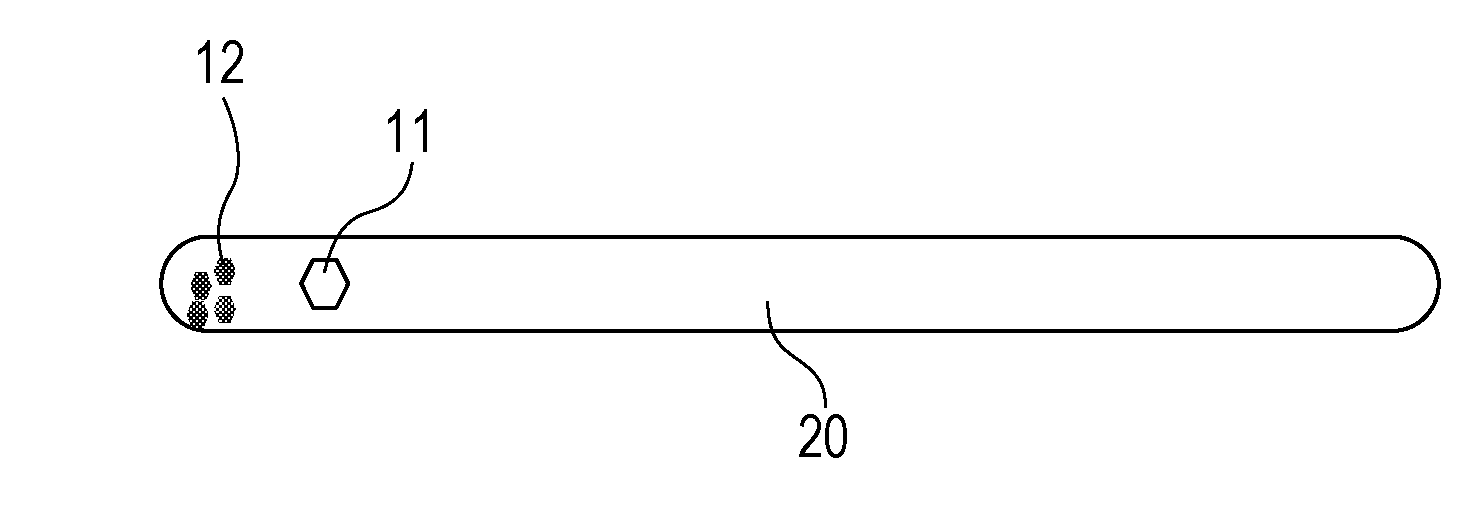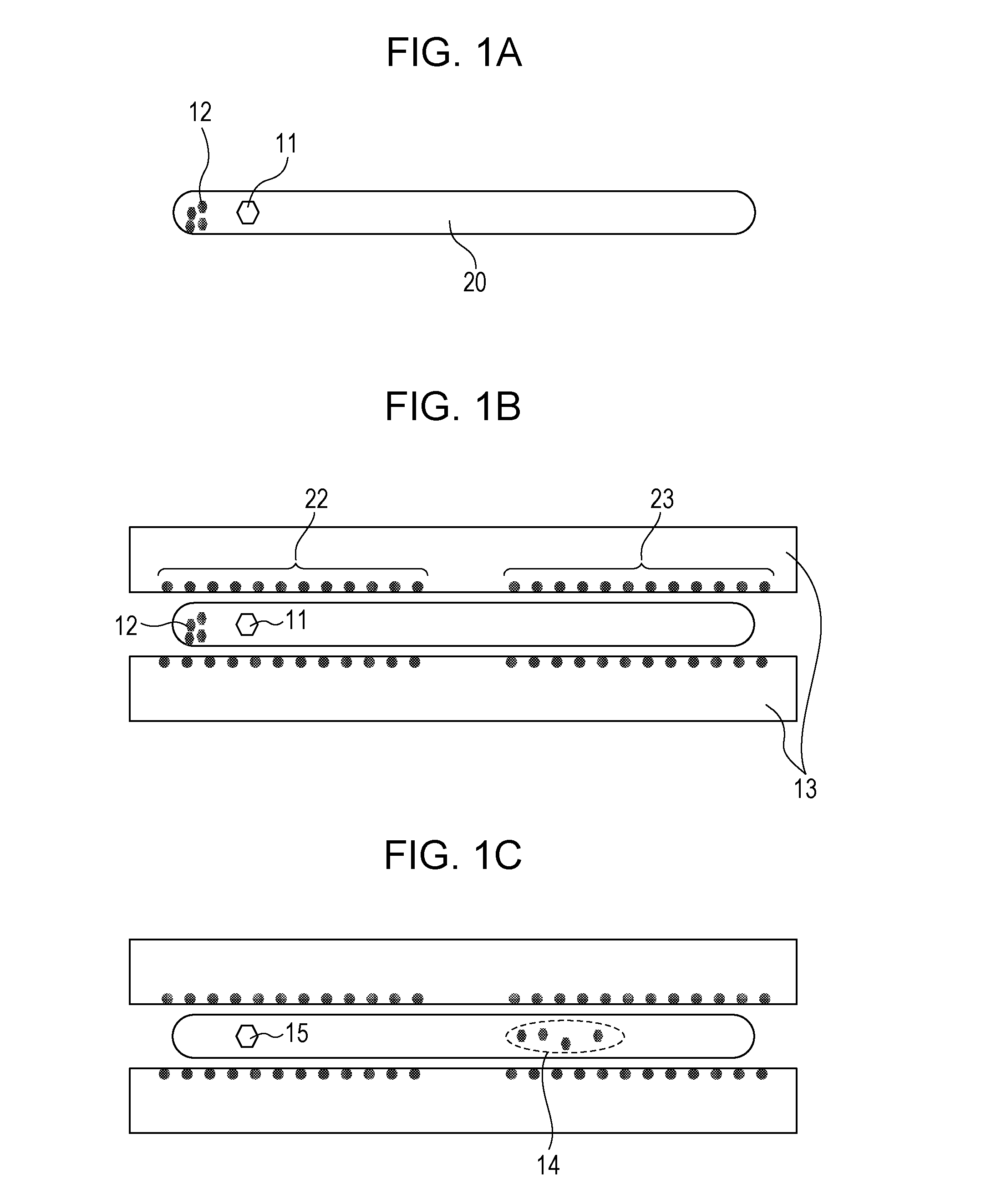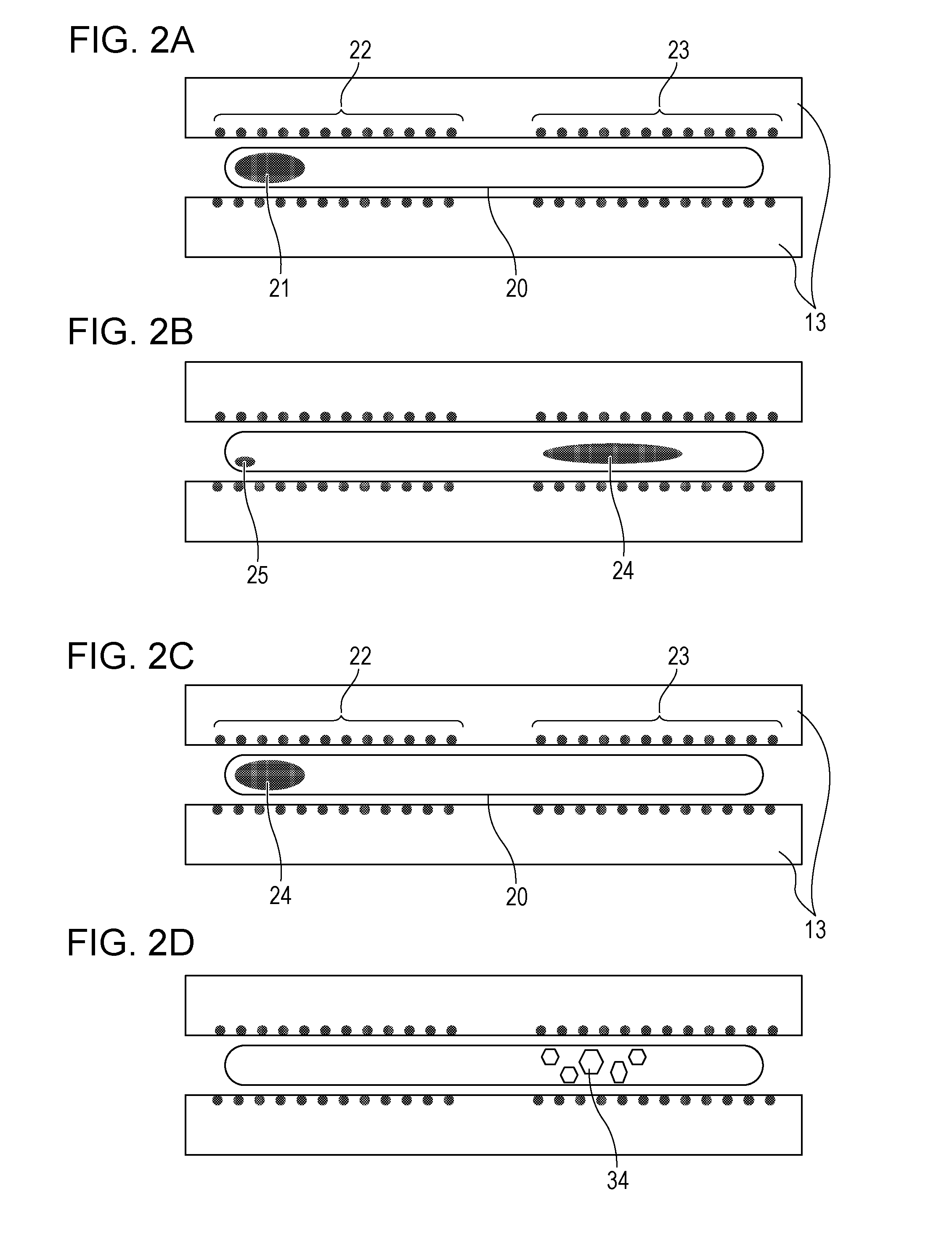Method for preparing bismuth iodide article and method for manufacturing radiation detecting element
a technology of bismuth iodide and radiation detection element, which is applied in the direction of radiation intensity measurement, superimposed coating process, instruments, etc., can solve the problem of taking a long time to form a bismuth iodide layer having a thickness sufficient to absorb radiation
- Summary
- Abstract
- Description
- Claims
- Application Information
AI Technical Summary
Benefits of technology
Problems solved by technology
Method used
Image
Examples
first embodiment
[0021]A first embodiment will describe a radiation detector including a bismuth iodide conversion layer that converts incoming radiation into an electric signal and a method for manufacturing the radiation detector. In the present embodiment, the radiation detector detects radiation in a current mode. The radiation detector of the present embodiment includes a conversion layer made of bismuth iodide. This bismuth iodide has been heat-treated at a temperature less than the melting point of bismuth iodide in an atmosphere containing iodine (hereinafter referred to as an iodine atmosphere). The present inventors have found that this heat treatment increases the resistivity of bismuth iodide and, in addition, increases signal current. The present inventors think that this is because the heat treatment reduces iodine defects in the bismuth iodide. Iodine defects in bismuth iodide are a cause of excess carriers that will reduce the resistance of the bismuth iodide and a carrier trap level...
second embodiment
[0038]A second embodiment will describe a radiation detector that detects radiation (including X-ray radiation) by a photo counting technique (pulse mode) will now be described. The term X-ray radiation mentioned herein refers to electromagnetic waves with energy in the range of 2 keV to 1000 keV, including γ-rays in this energy range.
[0039]FIG. 7 is a schematic diagram of a radiation detector 108. The radiation detector 108 is the same as the radiation detector of the first embodiment in that it includes a radiation detecting element 103 that generates charges according to incoming radiation 102, and a signal processing unit. The radiation detector of the present embodiment is however different from that of the first embodiment in that the signal processing unit includes a preamplifier 105 and a pulse counter 109. The preamplifier 105 outputs pulsed electrical signals according to charges generated from the radiation detecting element 103. The pulse counter 109 counts and outputs t...
example 1
[0052]In Example 1, first bismuth iodide is heat-treated in an iodine atmosphere to yield second bismuth iodide. In the present example, monocrystalline BiI3 is used as the first bismuth iodide. The second bismuth iodide prepared in the present example exhibits higher response to radiation and higher resistivity under dark conditions than the first bismuth iodide, when used as the conversion layer of a detector operated in a current mode as described in the first embodiment.
(1) Sublimation Purification of BiI3
[0053]In order to remove impurities from the raw material BiI3 powder (purity: 99.99%), the raw material was purified by sublimation. The raw material (BiI3 powder) 21 was placed at one end in a quartz tube 20, as shown in FIG. 2A, and the tube 20 was evacuated to a pressure of 5.0×10−3 Pa and then sealed into an air-tight container. Subsequently, the air-tight quartz tube 20 was set in a two-zone electric furnace 13. The first heater 22 and the second heater 23 of the two-zon...
PUM
| Property | Measurement | Unit |
|---|---|---|
| Temperature | aaaaa | aaaaa |
| Fraction | aaaaa | aaaaa |
| Partial pressure | aaaaa | aaaaa |
Abstract
Description
Claims
Application Information
 Login to View More
Login to View More - R&D
- Intellectual Property
- Life Sciences
- Materials
- Tech Scout
- Unparalleled Data Quality
- Higher Quality Content
- 60% Fewer Hallucinations
Browse by: Latest US Patents, China's latest patents, Technical Efficacy Thesaurus, Application Domain, Technology Topic, Popular Technical Reports.
© 2025 PatSnap. All rights reserved.Legal|Privacy policy|Modern Slavery Act Transparency Statement|Sitemap|About US| Contact US: help@patsnap.com



